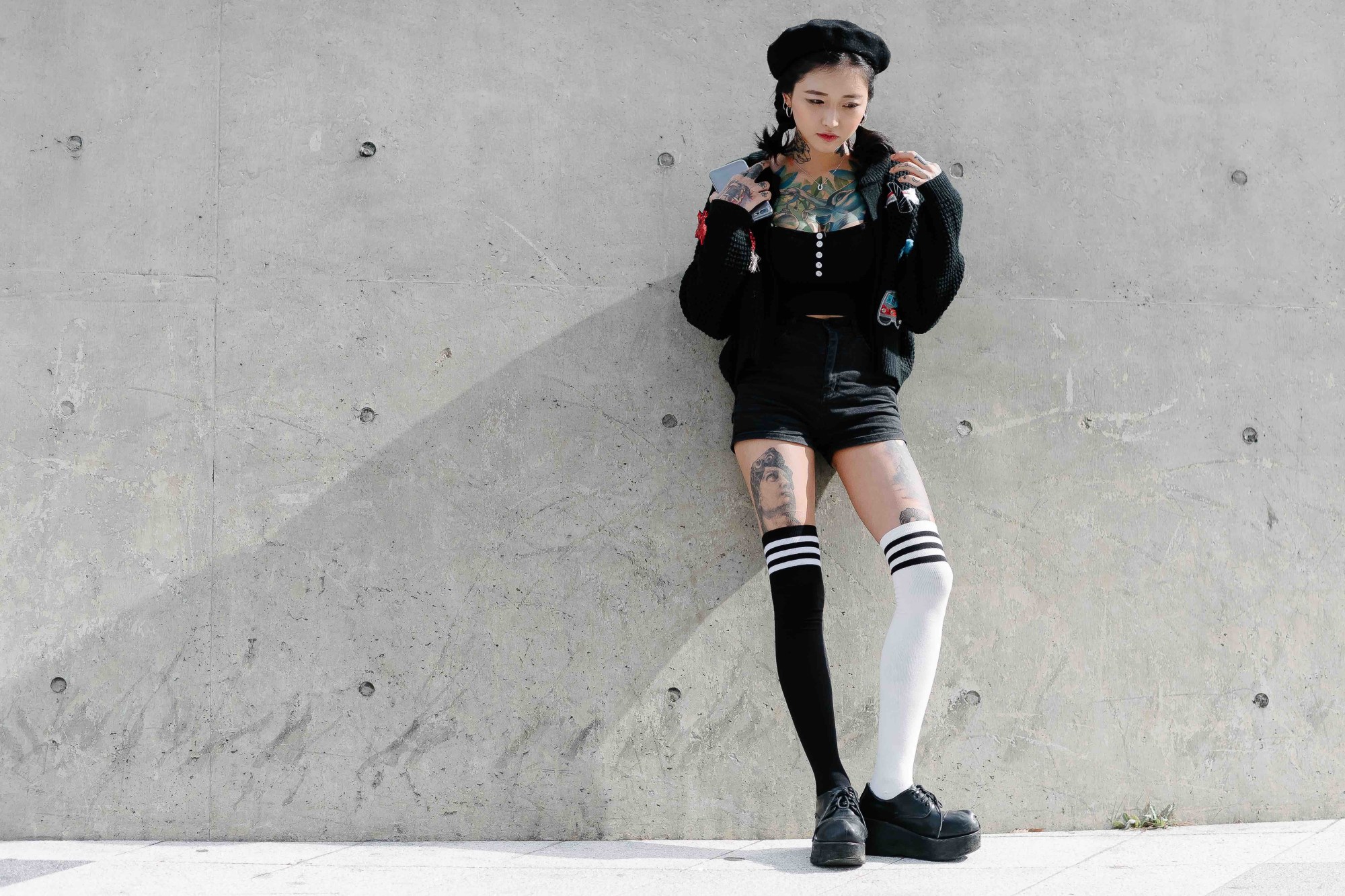“Haven’t you noticed when you go to Korea that there are so many mirrors?”
Designer Siki Im is describing a recent trip back to Seoul, the birthplace of his parents and a city where he spent much of his childhood. Though he’s now based in the U.S., the avant-garde menswear designer says there’s no shortage of inspiration to be mined from the South Korean capital, due in large part to a refreshing crop of style-obsessed youth who are turning the mirror on themselves — and the camera on one of Asia’s most fashion-forward fantasy lands.
As street style ebbs in New York and Paris, overrun with business-savvy bloggers who populate the shows in sponsored outfits and Insta-ready poses, the public fashion-as-spectacle phenomenon is still gaining steam in Seoul, thanks to a new generation of participants who are discovering a sartorial freedom previously deemed inaccessible.
Whereas Korean style was once governed by procedural and institutionalized cultural barriers, this generation is adopting a newfound creativity, thanks to changing gender norms and a more open discourse for self-expression.
Michael Hurt, an assistant professor at the Hanguk University of Foreign Studies, who was also one of the first street fashion photographers in Korea in the early 2000s, says the impetus for dressing up is about more than just making a statement; it’s also about freedom.
“Korean kids all wear uniforms until after high school,” Hurt explains, “and they’re basically taught to not really stand out. Being able to wear these trends is a total escape for them.”
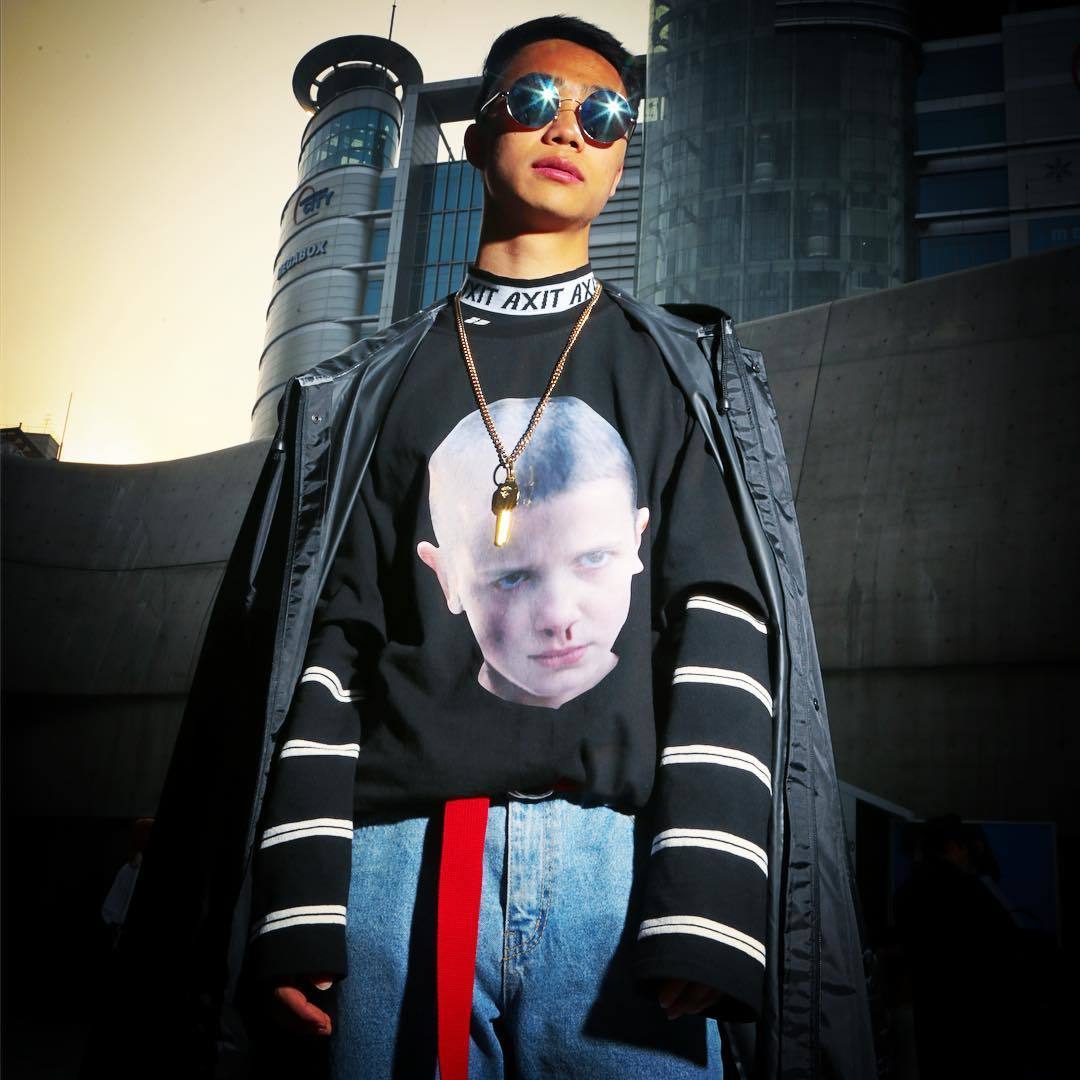
Just look at the photos from the recent Seoul Fashion Week. Photographers snapped away in the epicenter of the action in the Dongdaemun district, in front of a futuristic, egg-shaped structure designed by Zaha Hadid, capturing hip-hop and streetwear motifs overlapped with 90s-esque logos, romanticized androgyny, full-body tattoos, and sexualized looks verging on fetish wear. Like many trends that make their way to Asia, the majority of these influences originate in the Western Hemisphere.
Magazines like Nylon and Dazed and Confused bridge the gap by publishing Korean editions, while local blogs like photographer Lee Jaedoo’s JDIN KOREA, and the decade-old but still thriving Your Boyhood, offer daily inspiration in the form of photos, collages and doc-style musings on fashion campaigns, celebrity style and new collections.
Instagram has also created a global feedback loop between Seoul and the style capitals of the West. The internet has made it easier than ever to search for #outfitinspo and new codes for dressing. South Korea is known for having the fastest internet connection in the world, and, as the headquarters of Samsung, also provides access to the latest smartphones, cameras, and other social sharing tools.
Korea’s massive homegrown celebrity scene has always wielded influence on street fashion in the country (case in point: the Nike Air Vapormax recently sold out in under a minute after rapper/singer G-Dragon appeared in the ad campaign). But the currency of social media has brought in new templates to consult and replicate.
“Everything has opened up globally thanks to the internet,” says Im. “The kids have more access than ever, so they’re very aware of trends from around the world.”
Adds Alex Finch, a Seoul-based street style photographer who has covered Korean Fashion Week: “Everyone I know seems to on top of the latest collaborations and releases. If it goes on abroad, you can be sure it’s happening here too.”
The clothing manufacturers are struggling to keep up with the new styles popularized by the pictures. The ubiquitous private branded hives (PBH) of Dongdaemun are literal hubs of production, manufacturing and selling clothes under one roof, and churning out fast fashion replicas of Vetements or Gosha Rubchinskiy-style pieces in a matter of days. Want the Princeton slippers from Gucci, or an Off-White construction belt? The style-savvy get the knock-off versions and proudly pair them with distressed denim or exaggerated athleisure looks, taking the high-low mix to new extremes.
These sartorial cues are being remixed in exciting and unexpected ways, even if their meanings are sometimes lost in translation. Korea is thousands of miles away from where these trends and looks originate, so there is, understandably, a certain disconnect that takes place. The context, Im says, is different. Here are some of the more curious Seoul street style trends:
—
Hip-Hop
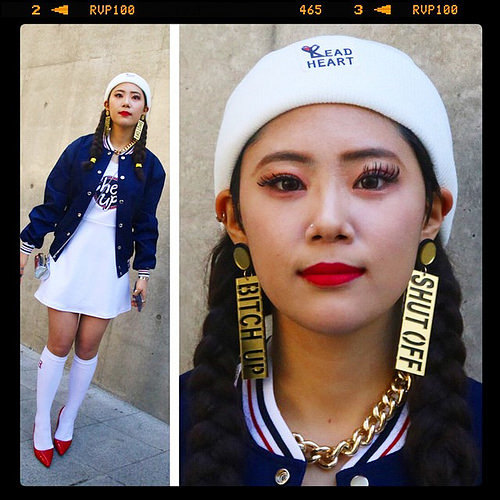
Hip-hop sensibilities line the streets of Itaewon, the bustling international district of Seoul that’s bordered by the Yongsan Garrison, a U.S. military base. The prevalence of both American tourists and army personnel, as well as the embassies nearby, has brought an influx of new cultural signifiers, from the recently opened hip-hop spot, Compton Club, to music and clothing shops that also touch on skate culture and streetwear (think Stussy, Supreme and HUF). The television program Show Me the Money is a popular rap competition show that broke all sorts of ratings records when it launched and is now in its sixth season. “It was a sensation,” says Chan Kim, the head men’s buyer for BEAKER, the biggest multi-brand store in the Korean market focused on contemporary and streetwear brands. “Every young kid listens to hip-hop now.”
On the street, oversized jerseys, patch bombers and Fear of God jackets are thrown over ripped jeans and Timberlands. Others go full 90s, with XL sweatshirts tucked into baggy overalls and fresh sneaks.
Hyper-Sexualized
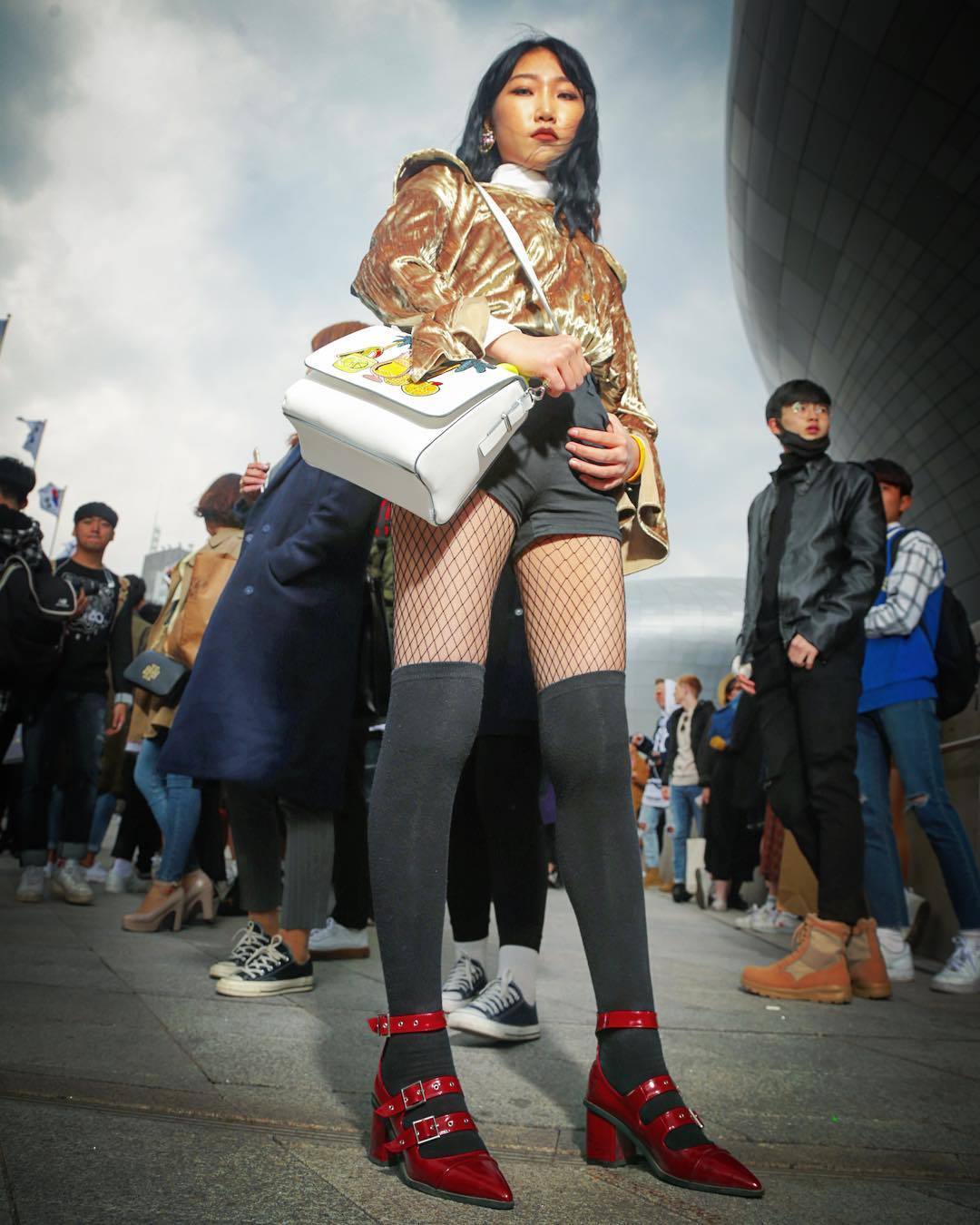
While the hip-hop heads sport Yeezy-esque oversized sweaters and retro-styled slogan tees, some young Korean girls stomp around in towering stilettos, thigh-high boots, and leather chokers.
“You see girls at fashion week who borrow a lot of stuff from S&M culture, and they might not know the specifics of what they’re wearing, but they do understand certain meanings,” says Michael Hurt. “The girls get that there’s a sexually charged nature to the object, and they know you don’t wear 6-inch stiletto heels to class.”
Punk
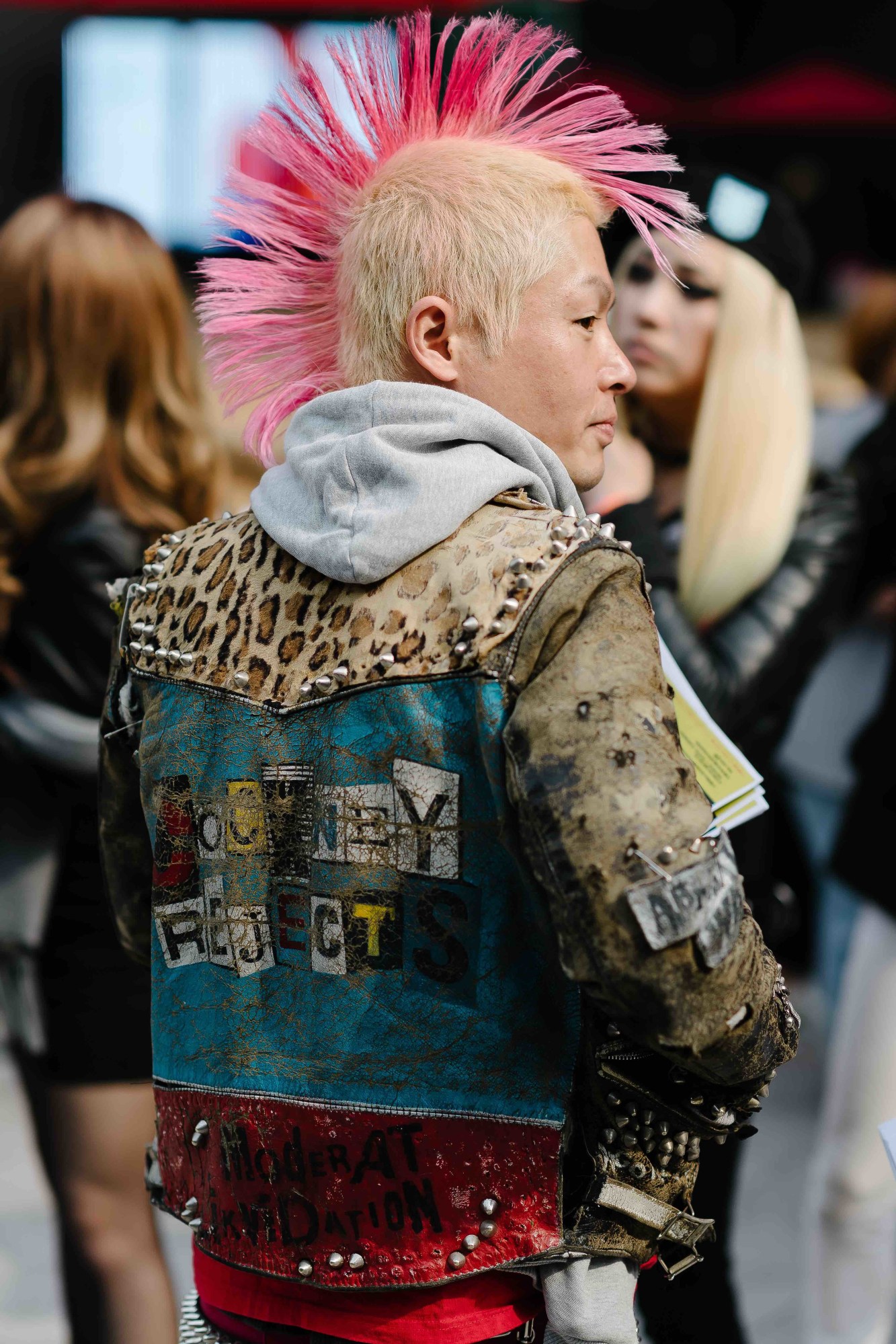
Chunky boots and leather jackets set the scene for Korean punk on the streets. Plaid pops up in red miniskirts or tied around the waist over black jeans and creepers. Dark makeup, piercings and chains veer into goth, while the presence of skulls and crossbones are flaunted on clothing and accessories without any irony.
Im, who played in punk bands in his younger days, says the nouveau-punk looks seen on the street stand out, but they’re hardly anti-authority. “The people wearing Doc Martens or a leather jacket aren’t questioning anything or speaking out against anything,” he says. And yet: “because the punk look is so obscure in Korea, these kids are still making a statement.”
Logo Mania
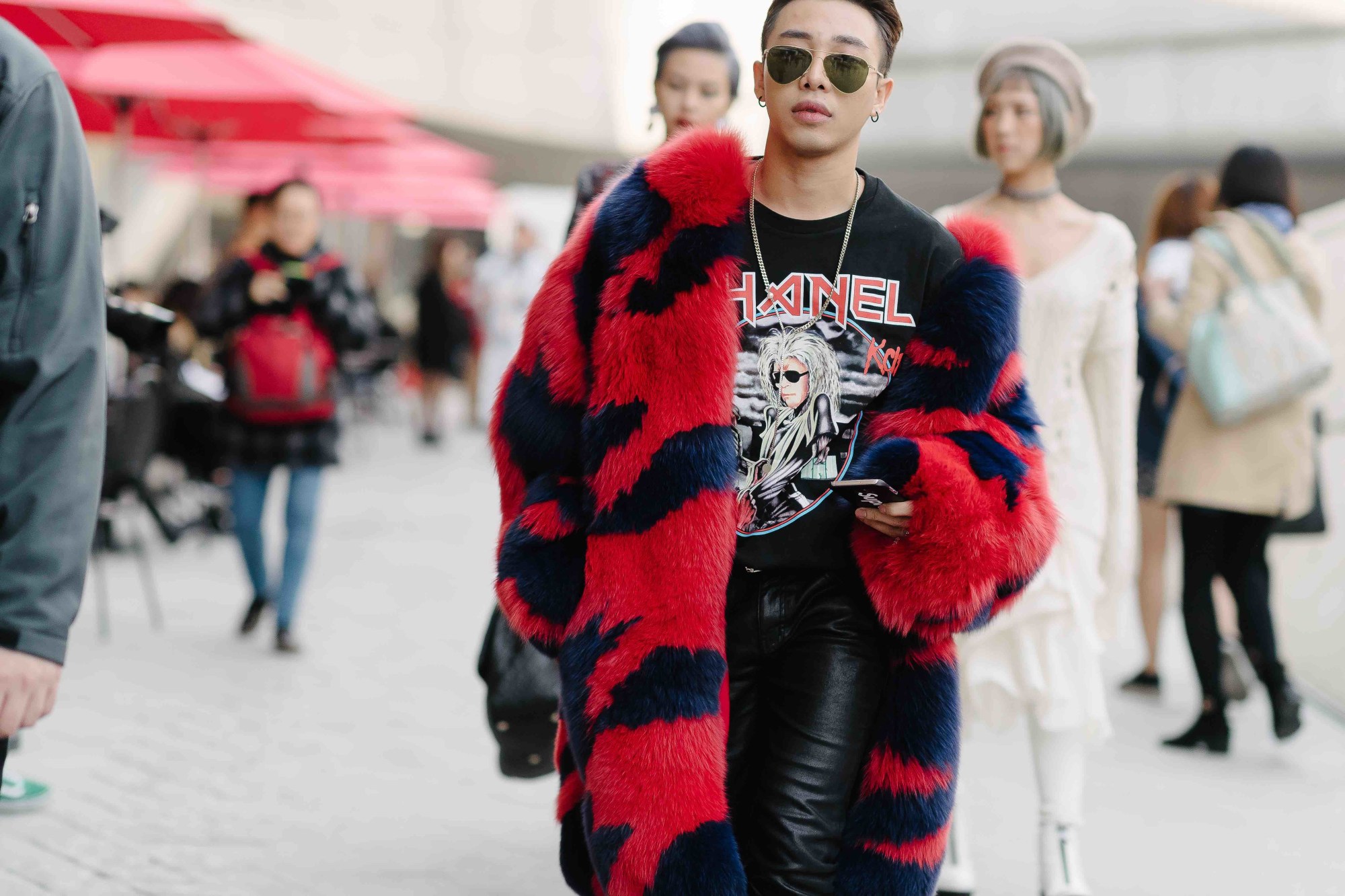
“When our parents were growing up, they had no money, and Korea was very poor,” says Im. “There was a certain way of living that was more modest and demure. Now, there is no longer a shame in expressing your wealth.” That wealth is expressed through the layering of logo on logo, with total looks by Chanel, Kenzo, Moschino, and other, mainly European fashion houses.
“This is the first generation of kids to be raised to express themselves through consumption,” adds Hurt, who says creativity is now celebrated among Korean youth and their peers. “They’re super consumers and fashion is something they’ve grabbed onto, so now it’s all about, ‘How can I stand out?’ whether it’s through the color of a cell phone case or by wearing wacky outfits.”
Gender Play
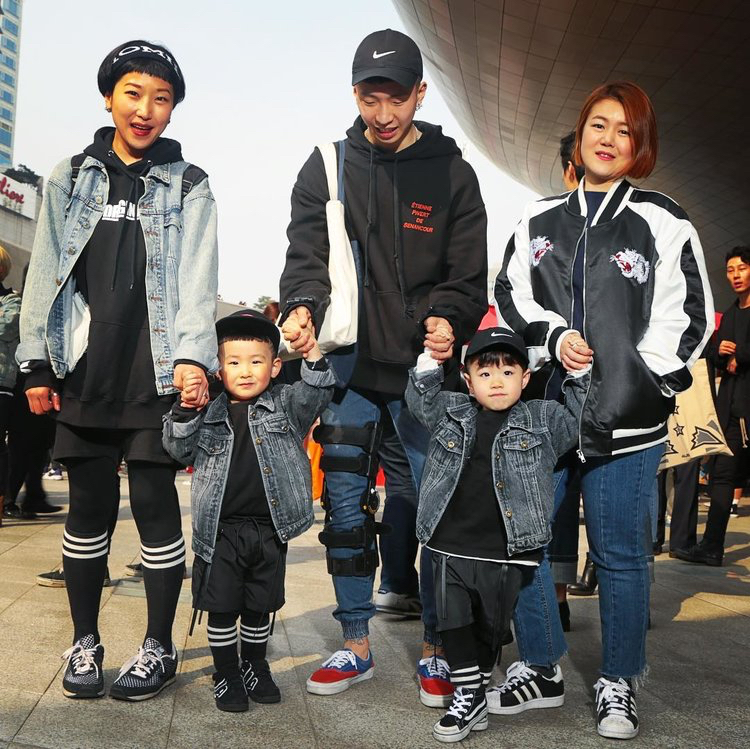
The shifting of accepted gender norms has made it easier to promote individualized style as well. Korean women, once encouraged to be super feminine, are now embracing cropped, shorn and chopped-up locks, while playing against type in super oversized sweatshirts, baseball caps and loose, aggressive silhouettes. You’re more likely to see a hoodie on a girl these days, while Korean men are experimenting with more androgynous ways of dressing as well, opting for long and draped jackets, kimono-style shirts and whimsical, childlike prints.
Korean men, who have long been proponents of wearing makeup, are now changing their hairstyles and hair color every few months too, mimicking the ever-evolving styles perpetuated by K-pop groups like EXO and Big Bang.
Body Mods
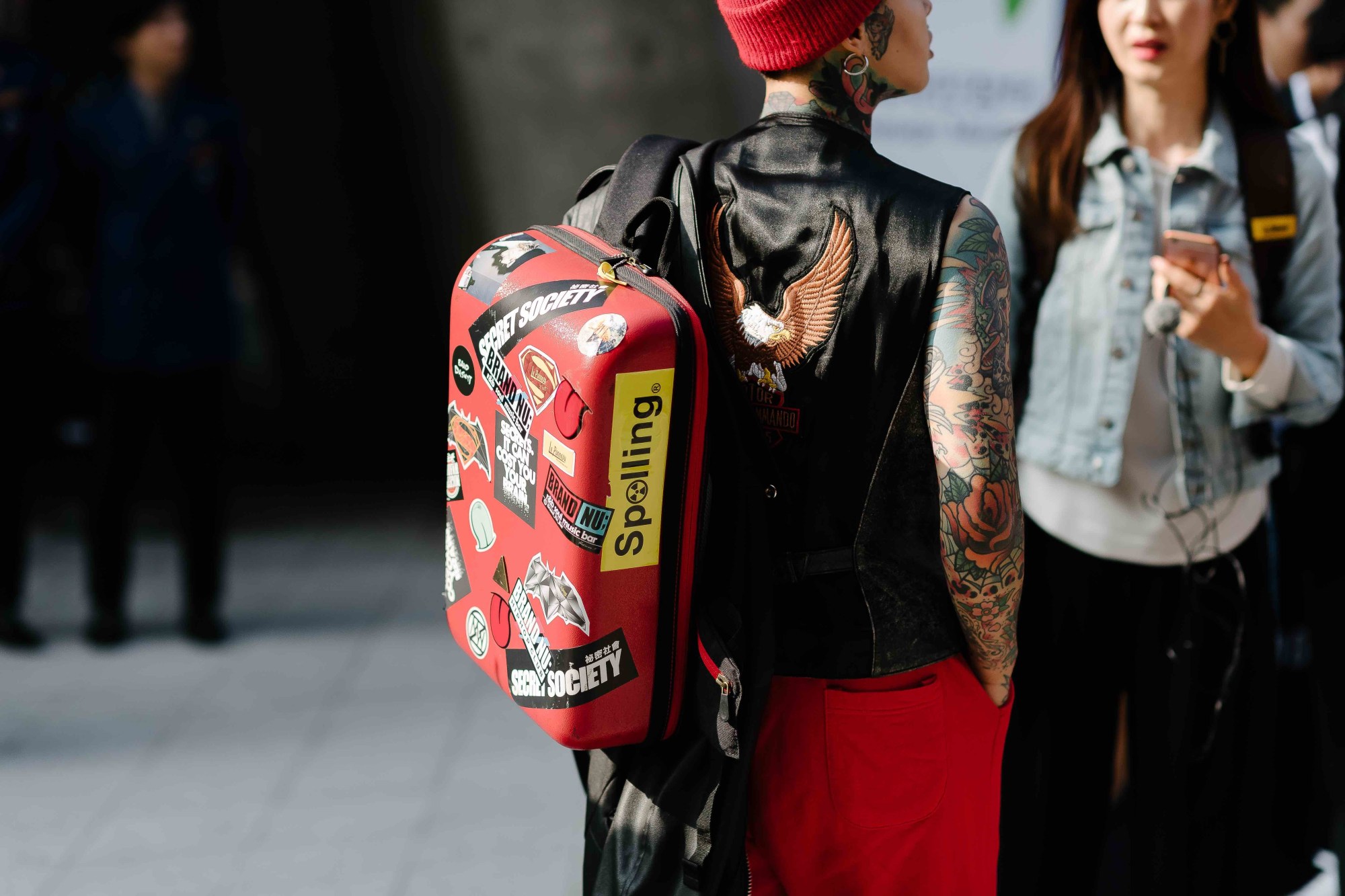
Both men and women are also experimenting with piercings and full-body tattoos, continuing the South Korean fascination with manipulating body and image, but without mirroring the previous generation’s obsession with plastic surgery.
But body modification is considered illegal in Korea, linked to old-timey tales of gang activity and decidedly un-virtuous behavior. “All the tattoos,” Chan Kim says, “are done in the shadows.”
Out in public with their families, most Koreans cover up their tats and piercings with long-sleeved shirts and beanies. But on the streets, in front of curious cameras, they spread their collars to reveal full-chest tattoos, or pull up their sleeves to show off new ink, while other tats peek out from under lace stockings, and piercings are re-inserted to exaggerated extremes.
“It’s an act of rebellion,” says Kim. “A lot of things are considered ‘forbidden’ to Koreans, but now they’re finding the courage to express themselves.”
—
This pervasive aping of Western culture, particularly hip-hop style, has many debating how egregious the cultural appropriation is. Much has been written about K-Pop stars like CL incorporating fashion and musical tropes popularized by American rappers. This trickles down to fashion: the iconic RUN DMC T-shirt is a popular presence on the streets of Seoul, while B-girl style has shown up everywhere from runway shows to the frenetic music videos of disbanded girl group 2NE1.
Hurt says that this imitation is generally not that deep; it’s superficial. “No one I’ve ever met in that T-shirt knows who RUN DMC is,” he says. “They don’t have a deep understanding of where it came from, but that’s okay, because they’re not trying to claim it either. They just like the style.”
Because they read the cultural texts differently, Koreans interpret and re-interpret them in their own ways, thus rendering symbols and words with meaning effectively meaningless. While this doesn’t get Koreans off the hook for their appropriation, it explains the context.
Cultural messages are decoded differently here too. When a young girl wears fishnet stockings or a Playboy shirt, she isn’t necessarily trying to make a statement about female sexuality. She’s simply picking and choosing from superficial motifs to create her own unique look. And for a culture that often praises conformity over originality, it’s an encouraging sign for the industry.
The goal, it seems, is less about creating new identities, but rather about creating multiple identities that can be put on or removed, like an elevated, high-end version of cosplay. It’s the fashion version of music sampling. Young Koreans are pushing the boundaries of self-expression, drawing inspiration from various genres without irony or cynicism. And, in a city of modesty that’s now a city of mirrors, it’s about embracing the idea of vanity as an opportunity to let your voice be heard.
“I think there’s a lot happening on the streets here that warrants attention,” says Finch, the street style photographer. “Whether it’s about taking risks or about doing your own thing, there’s a lot that people can learn from how kids are dressing in Seoul.”
Hurt, who has been covering Korean fashion for over a decade, says he’s glad his country is finally getting its due. “I was always told that Koreans have horrible fashion sense and that Japan was where you had to go for that,” he says, “But now, we are finally harnessing the creative capital of the city.”
Credits
Text Tim Chan
Photography courtesy and copyright Alex Finch and Michael Hurt
